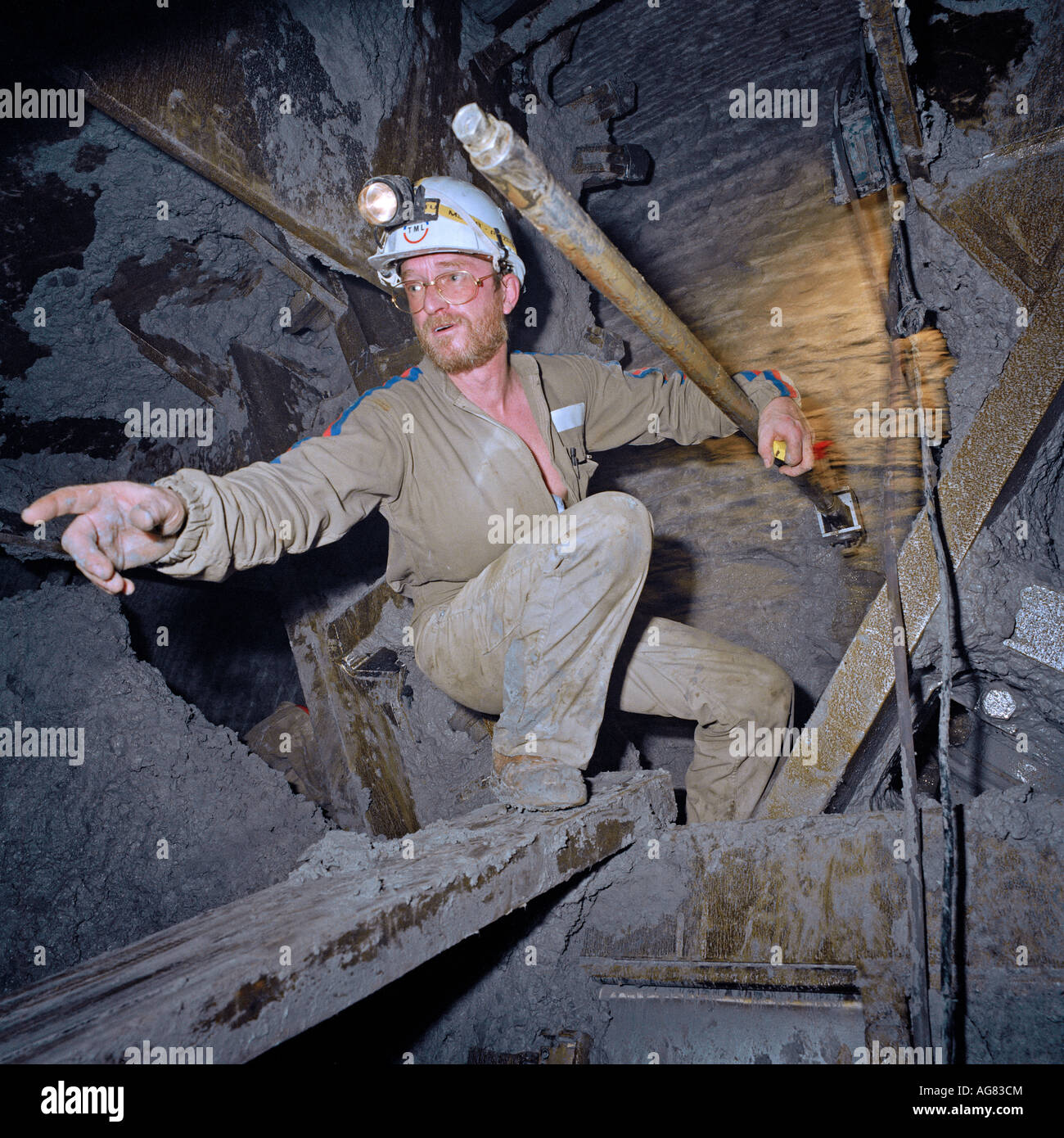French Channel Tunnel engineer with probe drill which proved the approaching UK service tunnel was correctly aligned.

Image details
Contributor:
qaphotos.com / Alamy Stock PhotoImage ID:
AG83CMFile size:
49.4 MB (4.5 MB Compressed download)Releases:
Model - no | Property - noDo I need a release?Dimensions:
4157 x 4157 px | 35.2 x 35.2 cm | 13.9 x 13.9 inches | 300dpiDate taken:
31 October 1990Location:
Mid-point between UK and France, 40m under the seabed, Europe.More information:
As the French and UK Channel Service Tunnel Boring Machines (TBMs) approached each other after a undersea journey of 38 kilometres, a probe drill pushed out from the UK TBM entered the French TBM with astonishing accuracy - only a few centimetres off-line. Soon after this, the historic breakthrough event on 1st December 1990 established the first land bridge between the two countries since the Ice Age. The Channel Tunnel is one of the wonders of the modern world. It is thirty-two miles long at an average depth of 45 metres below the sea-bed, the longest undersea tunnel and the second longest rail tunnel in the world (only the Seikan Tunnel in Japan is longer). It was built between 1987 and 1994 by Anglo-French consortium TransManche Link and is owned and operated by Anglo-French Eurotunnel plc. It opened for business in late 1994, offering services including a shuttle train for car, coach and freight vehicles, a Eurostar high-speed passenger service linking London with Paris and Brussels and a rail freight service. The tunnel boring machines were specially designed for excavating the chalk marl rock which lies beneath the seabed along the tunnel route. Digging the tunnel took 15 thousand workers around 170 million man hours over 7 years with tunnelling happening simultaneously from both ends. The Channel Tunnel consists of three parallel tunnels. There are two rail tunnels carrying trains to and from the UK to France and a smaller access tunnel served by narrow rubber-tyred vehicles and connected by transverse passages to the main tunnels at regular intervals. It allows maintenance workers access to the tunnels and provides a safe route for escape during emergencies.